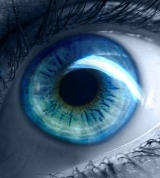
Samsung’s new Note7 is the company’s first public offering of iris scanning technology. It feels that security needs to progress past passwords, pins, and even fingerprints.

Samsung has taken its iris technology, initially to South Korean banks including Shinhan Bank, Woori Bank, and KEB Hana Bank, to gain adoption in their mobile banking services. It will not be long before it is rolled out globally with Citibank, Bank of America and US Bank said to be readying support for it.
But iris technology offers so much more than to log into bank websites or when using mobile banking services. Complicated processes such as certificate verification, one-time password or security cards are expected to be replaced.
But what is iris scanning and why is it the NBT.
{loadposition ray}
According to Wikipedia Iris recognition is a biometric identification that uses mathematical pattern-recognition techniques of one or both of an individual’s irises whose complex random patterns are unique, stable, and can be seen from some distance. It is extensively used by banks and the US military for access control.
It has been around for a while because its relatively easy to take a picture of a person’s eye with any low-cost CCD camera and near-infrared (NIR) light at distances from 75 to 250mm. The key words here are low cost and the fact that no physical contact is required - hygienic!
The result is a pattern or individual code of about 240 unique points (resulting in a 512-digital number - far more than fingerprint or face recognition) where the chance of mistaking one iris for another is “1 in 10 to the 78th power” – something that no one will ever have to worry about. Even blind people – or blind drunk people – can use it. Once “enrolled” (recorded) eyeglasses or contacts should not interfere with recognition.
It uses three lenses and directs a beam of infrared light into the eyes (not noticeable). Its patent (roughly translated states)
The first lens may include two narrow-angle lenses having narrow angles of view to expand and capture images of regions of the eyes of the user. The second lens may include a wide-angle lens having a wide angle of view to capture an image of the face of the user. The first lens may be a zoom lens, and the second lens may be a short focal length lens.
Samsung intend to expand its use to other devices especially tablets and home security (locks). While there are suggestions that iris scanning can be fooled by a high res 2D picture Samsung’s system needs a living, breathing, hot blooded person as it uses other periocular data and micro-features to ensure its really you.
I have been using the iris recognition on the Note7 and am happy to report that with or without glasses it is 100% accurate and pretty fast – although fingerprint is perhaps a tad more convenient than starting at the screen for a millisecond.
Note that Windows Hello uses a similar iris and face recognition system.